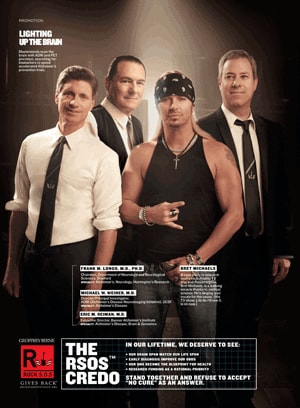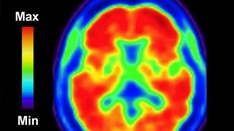November 29, 2010 — Eminent Alzheimer's disease researchers Frank Longo, Michael Weiner, and Eric Reiman are among those featured in the December issue of GQ Magazine's "Rock Stars of Science" pictorial, sharing the spotlight with celebrity rock stars Bret Michaels, Debbie Harry, and Jay Sean.
They appear in a special 6-page public service spread in GQ's "Men of the Year" edition, which went on newsstands November 23.
The feature is sponsored by designer menswear giant Geoffrey Beene, whose charity organization Geoffrey Beene Gives Back, gives 100% of its net profits to promote research dedicated to finding cures for diseases such as Alzheimer's disease and Huntington's disease that "threaten our future."
The hope is that highlighting the work that these superstar researchers do will spur new interest in medical research, prompt more young people to enter careers in science, and educate the pubic about the need for science funding.
 |
| Left to right: Frank M. Longo, MD, PhD; Michael W. Weiner, MD; Eric M. Reiman, MD; and Bret Michaels of Poison. Photo by Kurt Iswarienko |
For Dr. Longo, who could have taken over his family business and become head of Longo Toyota, the largest car dealership in the world, instead of becoming one of the leading researchers in the field of neurosciences, the rock star photo shoot experience was "awesome," and one that he won't soon forget.













